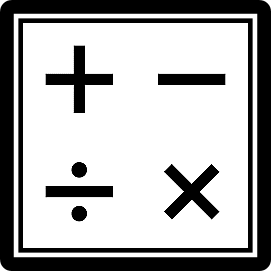CYB/100 (Cyber Domain)Below you will see some useful resources to help you prepare for and complete your class successfully.
Course Textbook
Whitman, M. & Mattord, H. (2017). Principles of information security (6th ed.). Cengage.
Note: You will access the textbook for this course inside of MindTap®
Read Me First
INTRODUCTION
This course defines the Cyber Domain that encompasses Cybersecurity as the discipline of securing computer information and communications systems, networks, infrastructures and assets, and protecting them against damage, unauthorized use, modification, or exploitation. The Cyber Domain must be managed ethically, politically, and physically in a similar collaborative fashion to the space, maritime, and physical domains of states and nations globally.
As the foundation for all the courses in the Cyber Security degree, the course provides a broad base knowledge of security within the U.S., as well as in key nations. Students who have knowledge in these areas are more likely to understand how their career choice aligns with the overall goals of the organization that is going to hire them.
Main Concepts
You begin the course with a look into the importance and scope of the cyber domain. After these introductory concepts, you explore legal, ethical, and privacy issues, as well as security planning, risk management methods, and security technology. During the last week of the course, you explore the infrastructure as applied to the cyber domain and the roles needed to keep the critical infrastructure protected.
Course Overview
Week One begins with a discussion on the components of an information system in which you choose an organization that you will study through the remainder of the course. Discussions continue to focus on expanding your understanding of the security implementation. This week’s individual assignment asks you to write a letter to the Chief Information Officer (CIO) for your chosen organization.
Week Two takes a deeper look into legal, ethical, and privacy issues in the cyber domain. You will explore concepts security technology and fundamental laws that impact and uphold security. This week’s individual assignment asks you to prepare a presentation to illustrate the legal, ethical, and privacy issues impacting your chosen organization.
Week Three begins the exploration of security planning and risk management methods. This week focuses on roles in security planning process and providing risk management solutions. By the end of the week, you take a further look into your chosen organization’s potential vulnerabilities and threats.
Week Four delves into security technology, cryptography, and physical security. After researching physical asset controls and cryptography, you create a presentation outlining the use of Intrusion Detection Software (IDS) for the organization you chose.
Week Five provides an opportunity to examine infrastructure and roles in the cyber domain. You will discuss the CIO versus the Chief Information Security Officer (CISO) roles and learn more about industry security certifications. For the final assignment, you determine the needed roles to implement the IDS chosen for your organization in Week Four.
THIS COURSE IN RELATIONSHIP TO THE PROGRAM
This course is a prerequisite for courses in the Cyber Security program. It is designed to establish a solid understanding of Cyber Domain components in support of global security.
ACCESSIBILITY
The Office of Accessibility and Disability Services supports a culture of accessibility and inclusion by providing equitable opportunities for all students to reach their educational goals. Please feel free to reach out to the accessibility team if you use a screen reader or other assistive technology and need content in another format.
CAREER CONNECTIONS
This course provides students with skills and knowledge aligned with today’s cybersecurity careers. Cybersecurity skills are more relevant than ever to employers as headlines and articles appear regularly in media about data compromises, threats of hacking to government security, and risks to personal identity become increasingly problematic. Cybersecurity vulnerability is a national, community, and personal concern.
Businesses and organizations are seeking professionals with cybersecurity skills to address growing cybersecurity concerns. The U.S. Bureau of Labor Statistics expects Cybersecurity jobs to grow 37 percent between 2012 and 2022. As of this publication, The Department of Homeland Security reports half a million open jobs in IT related to cybersecurity in the United States. On February 12, 2013, the President of the United States signed an Executive Order calling for the strengthening of cybersecurity of Federal Networks and the 16 Critical Infrastructures that is much more than just Federal Networks in the United States.
What role do you want to play in this growing critical field? Penetration tester, network defender, cybersecurity analyst, incident response handler… the job functions in cybersecurity are diverse and found at every level of an organization. This program allows students to explore the different ways cybersecurity impacts organizations, the different roles cybersecurity professionals play in organizations every day, and provides learners with relevant cybersecurity skills that are applicable to today’s society and workplace.
MindTap Instructions and Mobile App
This course uses MindTap from Cengage. When you launch into MindTap from your course, you will receive an End User License Agreement (EULA). If this is your first time launching the tool, you will receive the EULA and be prompted to register.
You can also access the MindTap elements of this course using the MindTap Mobile App. Follow the steps in UoP MindTap Student Instructions to download and use the mobile app.
College of IS&T Resources
Check Your Work for Plagiarism - SafeAssign Instructions
Your assignment submissions will automatically be checked for plagiarism by SafeAssign, a feature in Blackboard. SafeAssign compares your submission to a database of student work and the internet and then generates an Originality Report that you and your instructor can review. Review the full SafeAssign instructions to learn more about this feature.
Copyright 2019 by University of Phoenix. All rights reserved.


